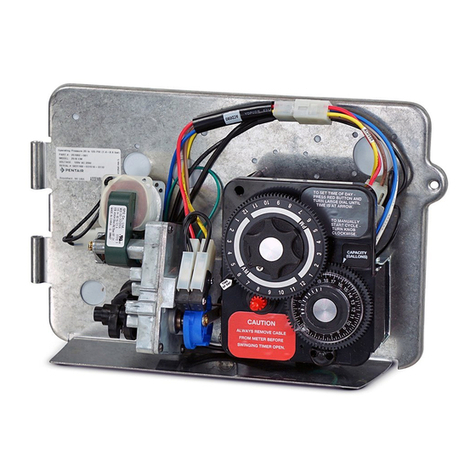sterling water treatment NEST series Quick start guide

First Sales, LLC
12630 US Highway 33 N
Churubusco, IN 46723
Phone (260) 693-1972 Fax (260) 693-0602
NEST-NST Series Installation Manual 1811101.docx
NEST & NST Series
Tannin / Water Softening System
Installation Instructions and Owner’s Manual

1
Pre-installation Instructions
Page 2
Installation Instructions
Page 4
Brine Tank
Page 5
Bypass Valve
Page 5
NST Series Time Clock Programming
Page 7
NEST Series Programming
Page 9
Specifications
Page 11
Component Parts Breakdown & List
Page 12
NST Control Valve Breakdown
Page 13
NST Control Valve Parts List
Page 14
NEST Control Valve Breakdown
Page 15
NEST Control Valve Parts List
Page 16
Troubleshooting
Page 17
Ten Year Limited Warranty
Page 19
Table of Contents

2
Description of the water softener system
This tannin / water softener system includes a brine (salt) tank and a resin (media) tank with a backwashing
control valve. Incoming water flows into the control valve and is directed down through the mixed bed ion
exchange resin. This resin exchanges the hardness and tannin ions for sodium and chloride ions (respectively).
The treated water then returns to the control valve where it is directed into the service lines.
Periodically the control valve will go through a regeneration cycle. The frequency of this regeneration process
will depend on the level of tannin and hardness present in the water and the estimated daily water usage. At a
minimum this unit should be regenerated every 3 days. This cycle is factory preset to begin at 2:00 A.M. At this
time the control valve will draw the brine solution out of the salt tank and flush both the accumulated hardness
and excess salt to the drain. The control valve will then put fresh water back into the salt tank to make brine for
the next regeneration cycle.
Water Quality
The water should be tested to determine the concentration, or levels of the items listed below:
Hardness - Hardness in drinking water is defined as those minerals that dissolve in water having a
positive electrical charge (cations). The primary components of hardness are calcium (Ca++) and
magnesium (Mg++) ions. But dissolved iron (Fe++) and manganese (Mn++) also contribute to total
“adjusted” hardness.Hardness produces scale, soap scum and white mineral deposits which shorten
the life of water using appliances, plumbing and fixtures. Water that has less than 1 grain of hardness is
considered to be “soft” water.
pH - A measurement of the acidity of the water. pH is reported on a scale from 0 to 14. Neutral water has a pH
of 7.0, lower values indicate acidic water. If your pH is below 6.8 you mayconsider installing an acid neutralizer
before the water softener to elevate the pH.
Iron - A naturally occurring metallic element. Iron levels in excess of 0.3 milligrams/liter (mg/l) combine with
oxygen causing orange or red (rust) stains on plumbing fixtures. Iron exists in some water sources in clear
water (ferrous) state, red water (ferric) state or bacterial form. Iron levels that exceed 0.5 mg/l require an iron
filter to be installed ahead of this water softener. If the iron is ferrous and iron bacteria are not present a softener
could be used a pre-treatment instead of the iron filter.
Manganese - A naturally occurring metallic element. Manganese levels as low as 0.05 milligrams/liter (mg/l)
can combine with oxygen to cause dark brown or black staining on fixtures. Additionally, manganese can cause
an odor in the water similar to a “rotten egg” smell. This water softener may reduce manganese as well as low
levels of iron; however, an iron filter maybe required in some cases.
Tannin - A naturally occurring humic acid. Tannin is caused by water passing through decaying vegetation.
Coffee and Tea are prime examples of tannin in water. Tannin levels as low as 0.5 milligrams per liter can
cause a yellow discoloration in water. This unit can treat 1,000 ppm gallons between regenerations. I.E. –if the
tannin level is 0.7, 1,000 ppm gallons ÷ 0.7 ppm = 1,428.57 gallons. NOTE: Tannin levels of 1 ppm or greater
can dramatically reduce the life of iron filter media.
Hydrogen Sulfide - A naturally occurring gas. Hydrogen sulfide, more commonly referred to as sulfur gas,
causes a distinct odor similar to “rotten eggs.” Due to its gaseous nature, hydrogen sulfide must be tested at the
well site within 1 minute of drawing the sample. If sulfur is present additional equipment will be required. An air
injecting iron filter can typically treat up to 2 milligrams per liter of sulfur gas.
Pre-installation Instructions

3
Location Considerations
The proper location to install the water softener system will ensure optimum performance and
satisfactory water quality. The following factors should be considered in selecting the location of the equipment.
1. The water softener should be installed after the pressure tank (private well system only) or after the
water meter on municipal water. Operating pressure of the softener must be limited to within 30 –
100 psi range.
2. The water softener should be installed as close as possible (preferably within 15’) to an adequate
floor or laundry drain capable of handling the backwash cycle volume and flow rate (refer to unit
specifications).
3. All water conditioning equipment should be installed prior to the water heater. Water temperatures
exceeding 100°F can damage the internal components of the control valve and filter tank. Install
with at least 10’ of pipe before the water heater to prevent thermal damage to the equipment. An
expansion tank may need to be installed in the line to the water heater in order to allow for thermal
expansion and comply with local plumbing codes.
4. The water softener should not be subject to freezing temperatures.
5. Ensure that any cartridge or in-line type filter installed prior to the water softener does not restrict
the water flow and pressure available for backwash and interfere with normal operation.
6. Appliances requiring extended periods of continuous or high flow water use (i.e. geothermal heat
pumps, swimming pools, lawn irrigation, outside hose bibs, etc.) should bypass the tannin / water
softener. (see installation diagram Fig. 1).
Inlet from
water
supply
Hard
Iron-FreeWater
FIGURE 1: Typical Installation
Water Heater
Softened
ColdWater
Softened
HotWater
UntreatedWater
Tannin / Water
Softener
Iron Filter
(if required)
Pressure Tank
(well system only)
10’ Minimum Distance
Grounding Straps
Pre-installation Instructions (cont.)
5 Micron
Cartridge
Filter

4
STEP 1: Carefully remove all components from packaging. DO NOT DISCARD PACKAGING until all
water softener components and fittings have been located.
STEP 2: Use clips and screws provided and attach bypass valve to the inlet/outlet of the control valve.
See figure 2 below.
STEP 3: Place unit at desired installation position. DO NOT plug into electrical outlet at this time
(see STEP 15 on page 6 or see STEP 10 on page 5). DO NOT put salt in the brine tank at
this time (see STEP 14 on page 6).
STEP 4: Shut off water at main supply. Relieve pressure by opening nearest faucet. On private well
systems, turn off power to pump and drain pressure tank. SHUT OFF POWER OR FUEL
SUPPLY TO WATER HEATER.
STEP 5: Cut main supply line as required to fit plumbing to inlet and outlet of bypass valve. DO NOT
PLUMB INLET AND OUTLET BACKWARDS. Piping should be supported. Do not apply
heat to any fitting attached to the bypass or control valve.
STEP 6: Use polyethylene drain line tubing provided (NO VINYL TUBING) to run drain line from control
valve discharge fitting to floor drain or sump pit capable of handling the backwash rate of the
softener (refer to specifications and flow rate on page 12). DISCHARGE END OF THE
DRAIN LINE MUST BE FIRMLY SECURED! There must be an air gap at the end of the
drain line to prevent siphoning of waste water and meet plumbing code. Total length of drain
line should be 15’ or less. AVOID OVERHEAD DRAINS.
Installation Instructions
NST Series (Time Clock)
FIGURE 2: Top View of Control Valve
NEST Series (Electronic
Metered)
CONTROLVALVE
METER MODULE
BYPASS
IN SERVICE
POSITION
OUT
IN
RETAINERCLIPS
DRAIN ELBOW
ELBOW LOCKNGCLIP

5
STEP 7: Connect one end of the 3/8” brine line to the control valve quick connect fitting. Insert the other
end of the brine line through the hole in the brine tank and into the quick connect fitting on the
safety brine valve. Remove the quick connect collet retainer clip (if included) before inserting
the brine line into each fitting, press the tube in very firmly and replace the retainer clip behind
the collet. NOTE: THE BRINE TUBING SHOULD BE INSERTED 5/8” INTO THE FITTING.
DO NOT PUT SALT INTO THE BRINE TANK AT THIS TIME.
STEP 8: Install overflow tubing from overflow elbow on brine tank to floor drain. Tubing must be lower
than overflow elbow at all times. DO NOT CONNECT DRAIN LINE FROM SOFTENER
CONTROL VALVE TO BRINE TANK OVERFLOW. DO NOT CONNECT BRINE TANK
DRAIN LINE TO THE SOFTENER DRAIN LINE.
STEP 9: Place bypass valve in the “Bypass” position (refer to Figure 4 below). Open main supply valve
or turn on power to pump on private well systems.
FIGURE 4: Stainless Steel Bypass Valve Operation
SafetyBrine
Valve
Salt Platform
SafetyFloat
Brine Tank
Overflow Elbow
Brine Well
Air Check
Brine
Overflow
Drain Line
(Not included)
To Floor Drain
Brine Line
To Control Valve
Brine Refill Elbow
FIGURE 3: Brine Tank Components
Installation Instructions (cont.)

6
STEP 10: For NST Series rotate the Manual Regeneration knob (see Fig. 5, page) clockwise to the
“Backwash” position.
For the NEST Series plug transformer into an un-switched electrical outlet and attach the
power cord into the control valve. Then press and hold down the center “ADVANCE” button for
5 seconds and release after “GO TO BW” appears on the screen (see Fig. 6, page 9). Wait
until the valve reaches the backwash position before going to STEP 11.
STEP 11: Refer to Figure 4 (page 5) for appropriate bypass valve operation. Rotate bypass lever of
stainless steel bypass ¼ of the way to Service allowing unit to fill slowly. Filling the mineral
tank in this position will force any trapped air to the drain. Fully open bypass valve to the
“Service” position.
STEP 12: Add enough water to the brine tank to a level approximately 1” above the salt grid.
STEP 13: Rotate the Manual Regeneration knob to the “Brine+Rinse” position. Continue slowly turning
the knob until resistance is felt and you hear 3 clicks. Verify that the water level in the brine
tank is dropping. Allow water level to drop below the salt grid before continuing. If the water
level does not drop, refer to page 17 for Troubleshooting.
For the NEST Series press the center “ADVANCE” button and the control valve will go to the
brine draw position. Verify that the water level in the brine tank is dropping. Allow water level
to drop belowthe salt grid before continuing. If the water level does not drop, refer to section 8
of Troubleshooting.
STEP 14: Fill the brine tank with water softener salt.
STEP 15: Plug the softener into an un-switched electrical outlet, if not done previously.
STEP 16: Rotate the Manual Regeneration knob to the “Rapid Rinse” position and allow the regeneration
to complete automatically.
The NEST Series should be advanced by the center “ADVANCE” button to the fast rinse
position and allow the regeneration to complete automatically.
STEP 17: Check for leaks and correct as necessary.
STEP 18: Turn power or fuel supply back on to water heater.
STEP 19: Set the current time of day on the timer (note AM and PM) (refer to Fig. 5 or Fig. 6, depending
on the model number).
STEP 20: Set the regeneration frequency (refer to Fig. 5 or Fig. 6, depending on the model number).
The NEST Series units determinefrequencybased on gallons used.
Installation Instructions (cont.)

7
How to set Time of Day:
1. Press and hold the red button to disengage the 24 hour gear.
2. Turn the large 24 hour gear until the actual time of day is at the time of day arrow.
3. Release the red button to again engage the 24 hour gear.
How to set the Days of Regeneration:
1. Calculate the Adjusted Hardness by multiplying the iron concentration (ppm) by3 and adding to
the water hardness test results.
Example: Hardness = 25 gpg (grains per gallon)
Iron = 0.5 ppm (part per million)
Adjusted Hardness = 27 gpg [25 + (3 x 0.5)]
25 + 1.5 = 26.8 (roundto 27)
2. Refer to the appropriate table for your water softener model number (page 8) to determine how
many TIMES in a 12 day cycle the softener should regenerate. If the adjusted hardness falls
between two numbers on the chart always use the higher number (never round down).
Example: Water Softener Model NST45
3 people in family
Adjusted hardness 27 gpg
Result: Set softener to regenerate 4 TIMES in 12-day cycle (once every 3 days)
3. Next calculate the number of gallons that can be treated for tannin, divide that number by the
estimated daily water use (dropping all fractions) to determine the maximum number of days
between regenerations for tannin reduction. Use the lowest number resulting from steps 2 & 3.
Example: Tannin = 1.7 ppm, 3 people in family
3 peoplex 75 gallons per day = 225 gallons per dayusage
1,000 ppm gallons ÷ 1.7 ppm tannin = 588.24 (drop fractional amounts 588)
588 gallons capacity ÷ 225 gallons usage per day = 2.61 days (round to 2)
Result: Set softener to regenerate once every2 days
NST Series Time Clock Setting Instructions
FIGURE 5: Front of Time Clock Timer Assembly

8
4. Rotate the skipper wheel until the number 1 is at the red pointer. Each number represents a day.
The number by the red pointer is tonight.
5. Slide the metal tabs outward on the desired days of regeneration.
NOTE: The tannin / softener should be regenerated at least every 3 days to prevent fouling
of the tannin reduction resin.
How to Manually Initiate a Regeneration Cycle:
1. Grab the manual regeneration knob and turn clockwise SLIGHTLY.
2. The drive gear will engage the regeneration knob which will make a complete revolution and return
to the “Service” position after the regeneration cycle.
Regeneration Days Tables:
People
Adjusted Hardness -- Grains per Gallon
5
10
15
20
25
30
35
40
1
1
1
1
1
2
2
2
2
2
1
1
2
2
3
3
4
3
1
2
3
3
4
4
6
4
1
2
3
4
6
6
5
2
3
4
6
6
6
2
3
4
6
7
2
4
People
Adjusted Hardness -- Grains per Gallon
5
10
15
20
25
30
35
40
45
50
1
1
1
1
1
1
1
2
2
2
2
2
1
1
1
2
2
2
3
3
3
3
1
1
2
2
3
3
4
4
4
1
2
2
3
3
4
4
5
1
2
3
3
4
6
6
1
2
3
4
6
7
2
3
4
6
6
8
2
3
4
6
9
2
3
6
10
2
3
6
TABLE 1: Model Number NST45
TABLE 2: Model Number NST60
NST Series Time Clock Setting Instructions (cont.)

9
+
SET BUTTON
1. Press and hold “Set Button”for 5 seconds to enter Programming Mode.
2. When valve is in Programming Mode, press “Set Button”to confirm setting and advance to next
menu option.
ADVANCE BUTTON
1. Press and hold “Advance Button”for 5 seconds to initiate an immediate regeneration cycle.
2. Press and release “Advance Button”during a regeneration cycle to immediately advance the valve
to the next step in the regeneration process.
3. When the valve is in Programming Mode, press the “Advance Button”to move the cursor.
UP BUTTON
1. When the valve is in the Programming Mode, press “Up Button”to adjust setting.
NEST Series Programming
Advance Button
FIGURE 6: Front of Electronic Meter Timer Assembly

10
Enter Programming Mode:
Press and Hold the SET Button for 5 seconds.
Use Up Button to set current hour
Use Up Button to set current minute
Use Up Button to set AM/PM
Use Up Button to set ADJUSTED Hardness
Exit Programming Mode
NEST Series Programming (cont.)

11
DESCRIPTION
UNIT MODEL NUMBER
NST45
NST60
NEST45
NEST60
MEDIA VOLUME, ft3
1.5
2.0
1.5
2.0
HARDNESS CAPACITY, grains
Factory Salt @ 9 lb/ft3(146 g/L)
24,000
29,000
24,000
29,000
TANNIN CAPACITY, ppm gallons
Factory Salt @ 9 lb/ft3(146 g/L)
1,000
1,000
1,000
1,000
SERVICE FLOW RATES, gpm
Cont. (3 gpm/ ft3 cation resin)
3
4
3
4
Service (8 gpm/ ft3 cation resin)
8
10
8
10
Peak (Max. 20 psi drop)
15
17
15
17
PRESSURE LOSS, psi
@ Continuous Flow Rate
1
2
1
2
@ Service Flow Rate
8
8
8
8
@ Peak Flow Rate
19
19
19
19
REGENERATION FLOW RATES, gpm
Backwash
2.4
3.0
2.4
3.0
Brine Draw / Slow Rinse
0.38 / .45
0.56 / 0.84
0.38 / .45
0.56 / 0.84
Rapid Rinse
2.4
3.0
2.4
3.0
FACTORY REGENERATION SETTINGS
Preliminary Rinse (minutes)
5
5
--NA--
--NA--
Backwash (minutes)
10
10
6
8
Brine & Rinse (minutes)
50
50
60
60
Rapid Rinse (minutes)
10
10
6
6
Settling Rinse (minutes)
5
5
--NA--
--NA--
Brine Fill (# of salt)
12
18
12
18
Total Water Used (gallons)
113
162
60
98
DIMENSIONS, inches
Mineral Tank (diameter x height)
10 x 54
12 x 48
10 x 54
12 x 48
Brine Tank (diameter x height)
14 x 34
14 x 34
14 x 34
18 x 33
Overall (depth x width x height)
18 x 28 x 62
18 x 30 x 56
18 x 28 x 62
18 x 30 x 56
GENERAL REQUIREMENTS:
Iron <= 0.5 ppm
110v/60hz
0.5 amps
Specifications

12
Ref
#
Description
Unit
NST45
NEST45
NST60
NEST60
1
Timeclock Valve
w/bypass
N-1.5Vlv
Assy w/BP
N-2 Vlv Assy
w/BP
Electronic Valve
w/bypass
NE-1.5Vlv
Assy w/BP
NE-2Vlv
Assy w/BP
2
Mineral Tank
MTP1054GR
MTP1248GR
3
Distributor
D100S-54
D100S-48
4
Resin
(2) H05P
(3) H05P
Tannin Resin
(1) T05P
(1) T05P
5
¼” X 1/8” Gravel
QC20
QC20
6
OverflowFitting
BT-OVERFLO
BT-OVERFLO
7
Safety Brine Valve
SBV14ASSY
SBV14ASSY
8
Salt Platform
BTSG14
BTSG18SQ
9
Brine Tank Assy.
BT1434ASSY
BTSQ18ASSY
10
Top Screen
18280-02
18280-02
Notes
1.
Refer to pages 13 –14 for complete control valve breakdown of timeclock
initiated control valve and pages 15 –16 from complete control valve
breakdown of electronic control valve.
Component Parts Breakdown
1
2
3
4
5
9
6
7
8
10
1

13
NST Time Clock Control Valve Breakdown

14
REF #
Part Number
Description
A
N-PH
Power head, Time clock
B
60102-00
Piston Assembly
C
60125
Seal and Spacer Kit
D
60084-0102NMS
Injector and Drain Housing Assy, Blank DLFC, #1 Injector, 0.5 GPM BLFC
E
60032
Brine Stem Assembly
F
60900-41
Coupling, Adapter S/ASSY
G
60040SS
Bypass Valve, Stainless, ¾” NPT (Standard)
60041SS
Bypass Valve, Stainless, 1” NPT (Optional, use -1S suffix instead of -S)
1
13753-02
Cover (select models only)
2
18743-1
Motor, 120v/60hz, 1/30 RPM
3
13304
O-Ring, Distributor, -121
4
12281
O-Ring, Tank, -338
5
10914-1
Injector Throat, #1, White (NST45)
10914-2
Injector Throat, #2, Blue (NST60)
6
10227
Injector Screen
7
10913-1
Injector Nozzle, #1, White (NST45)
10913-2
Injector Nozzle, #2, Blue (NST60)
8
13303
O-Ring, -021
9
12088
Flow Control Washer, 2.4 GPM (NST45)
12089
Flow Control Washer, 3.0 GPM (NST60)
10
NE-DRAIN ELB
Drain Elbow, Quick Connect x ½” barbed
11
NE-DRAIN CLIP
Quick Release Clip, Drain Elbow
12
NE-CON ORG
Connector O-Ring
13
14105
Bypass Valve Seal, Single Lever
NST Time Clock Control Valve Parts List

15
NEST Metered Control Valve Breakdown

16
REF #
Part Number
Description
A
NE-PH
Powerhead, Metered
B
NE-FC
Front Panel and Circuit Board Assembly
C
60102-NES
Piston Assembly
D
60125
Seal and Spacer Kit
E
60084-0123NES
Injector and Drain Housing Assy, 2.4 gpm DLFC, #1 Injector, 1 GPM BLFC
F
60032
Brine Stem Assembly
G
EM-1
Meter Module (includes cable)
H
60040SS
¾” Stainless Steel Bypass Valve
1
42349
Motor, 24v/60hz, 2 RPM
2
NE-TRANS
Transformer, 110v Input--24v Output
3
13304
O-Ring, Distributor, -121
4
12281
O-Ring, Tank, -338
5
10914-1
Injector Throat, #1, White (for NEST45)
10914-2
Injector Throat, #2, Blue (for NEST60)
6
10227
Injector Screen
7
10913-1
Injector Nozzle, #1, White (for NEST45)
10913-2
Injector Nozzle, #2, Blue (for NEST60)
8
13303
O-Ring, -021
9
12088
Flow Control Washer, 2.4 GPM (for model NEST45)
12089
Flow Control Washer, 3.0 GPM
12090
Flow Control Washer, 3.5 GPM (for models NEST60)
10
NE-DRAIN ELB
Drain Elbow, Quick Connect x ½” barbed
11
NE-DRAIN CLIP
Quick Release Clip, Drain Elbow
12
NE-CON ORG
Connector O-Ring
13
14105
Bypass Valve Seal, Single Lever
14
NE-CLIPS
Clips and screws set for NES & FES
NEST Metered Control Valve Parts List

17
PROBLEM
CAUSE
SOLUTION
1. Softener fails to regenerate
A. Electrical service to unithas been
interrupted
A. Ensure permanent electrical service
to unit (switch, circuit breaker, plug,
etc.)
B. Meter cable not inserted into meter
B. Insert meter cable into meter
C. Defective timer motor
C. Replace timer motor
D. Faultymeter assembly
D. Replace meter assembly
2. Softener delivers hard water
A. Bypass valve is open
A. Close bypass valve
B. No salt in brine tank
B. Add salt to brine tank and maintain
salt level above water level
C. Brine tank overfilled with water
C. See Problem # 8 below
D. Insufficient water flowing into brine
tank
D. Check brine tank fill time and clean
brine line flow control
E Leak at distributor tube
E. Check length of distributor tube and
condition of pilot tube o-ring
F. Internal valve leak
F. Replace piston and seals/spacer kit
G. Softener not regenerating
G. See Problem # 1 above
H. Slow leak in plumbing that is not
registered by the meter IE dripping
faucet
H. Eliminate sources of slow leaks
I. Softener resin fouled by iron
I. Manually regenerate with a strong
solution of resin cleaner for iron or
re-bed the softener
3. Unit uses too much salt
A. Improper salt setting
A. Correct salt setting
B. Excessive water in brine tank
B. See Problem # 8 below
C. Leak in plumbing that is sufficient to
be registered by the meter IE
running toilet
C. Eliminate sources of leaks
4. Loss of water pressure
A. Softener too small for application
A. Check application requirements and
resize water softener as required
B. Foreign material buildup in water
softener
B. Perform an extended backwash:
1) Place unit in manual regeneration
2) When backwash begins, unplug
the unit from the electrical outlet
3) Allow unit to remain in backwash
for 30+ minutes
4) Plug unit back into electrical
Outlet, allowregeneration to
finish automatically
5. Loss of resin through drain line
A. Air in water system
A. Locate source of air in system:
1) Check for low water table
conditions in well
2) Check forpositive seal on brine
line connections
B. Drain line flow control is too large
B. Ensure proper drain line flow control
is installed
C. Mineral tank is overfilled
C. Remove excess resin or allow resin
to discharge to proper level during
backwash
6. Loss of resin into service line
A. Softener is installed backwards
A. Re-plumb the softener correctly and
clean resin from faucet screens,
flush valves and water heater
B. Hot water has backed up into the
softener and melted components
B. Re-plumb the softener correctly
(minimum 10’ pipe before water
heater or install an expansion tank)
and replace damaged components
C. Broken distributor basket
C. Replace distributor basket
Troubleshooting

18
D. Gravel underbedshifted to one side
D. Redistribute gravel to cover
distributor
PROBLEM
CAUSE
SOLUTION
7. Iron in softened water
A. Iron exceeds recommended level
or is not “Clearwater” iron or iron
bacteria is present
A. Test incoming water supply and
install OXY Series iron filter prior to
softener, as needed
B. Softener resin fouled by iron
B. Manually regenerate with a strong
solution of resin cleaner for iron or
re-bed the softener
8. Excessive water level in brine tank
A. Restricted drain flow control
A. Clean drain line flow control
B. Drain line too long or installed
overhead or restricted
B. Verify drain line is not restricted or
improperly installed
C. Vinyl drain line was used
C. Replace drain line with rigid or semi-
rigid material with no kinks and as
few elbows as possible
D. Brine valve sticking or leaking (soft
water)
D. Replace brine valve assembly
E. Injector or injector screen plugged
(hard water)
E. Clean or replace injectors and
screen
F. Fittings on eitherend of the brine
line are loose
F. Tighten loose brine line connections
9. Salty water
A. Brine tank is overfilled (salty taste
goes away after water usage)
A. See Problem # 8
B. High TDS (salty taste does not go
away after water usage)
B. Install a reverse osmosis system to
reduce TDS
10. Water leaks to drain continuously
A. Foreign material in control valve
A. Remove and inspect piston and seal
kit. Replace as necessary
B. Drive motor stopped during
regeneration cycle
B. Check for obstruction in piston and
seals. Replacedrive motor. Inspect
condition of power head gears
C. Internal valve seal leak
C. Replace seals and/or piston
Troubleshooting (cont.)

19
WARRANTY –First Sales, LLC. warrants this water conditioner against any defects that
are due to faulty material or workmanship during the warranty period. This warranty does
not include damage to the product resulting from accident, neglect, misuse,
misapplication, alteration, installation or operation contrary to printed instructions, or
damage caused by freezing, fire, flood, or Acts of God. From the original date of
consumer purchase, we will repair or replace, at our discretion, any part found to be
defective within the warranty period described below. Purchaser is responsible for any
shipping cost to our facility and any local labor charges.
One year on the entire water conditioner
Five years on the control valve
Ten years on the mineral tank
GENERAL CONDITIONS –Should a defect or malfunction occur, contact the dealer that
you purchased the product from. If you are unable to contact the dealer, contact First
Sales, LLC. @ (260)693-1972. We will require a full description of the problem, model
number, date of purchase, and selling dealer’s business name and address.
We assume no warranty liability in connection with this water conditioner other than
specified herein. This warranty is in lieu of all other warranties, expressed or implied,
including warranties of fitness for a particular purpose. We do not authorize any person
or representative to assume for us any other obligations on the sale of this water
conditioner.
FILL IN AND KEEP FOR YOUR RECORDS
______________________________________________________________________
Original Purchaser Date of Purchase Model #
Address of Original Installation City State
Dealer Purchased From Dealer Address City State
First Sales, LLC.
12630 U.S. 33 North, Churubusco, IN 46723
Phone: (260)693-1972 Fax: (260)693-0602
TEN YEAR LIMITED WARRANTY
This manual suits for next models
1
Table of contents
Popular Water Dispenser manuals by other brands
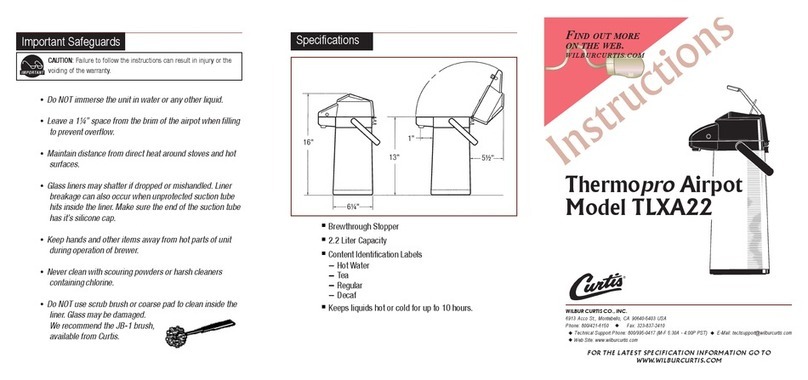
Curtis
Curtis Thermopro Airpot TLXA22 instructions
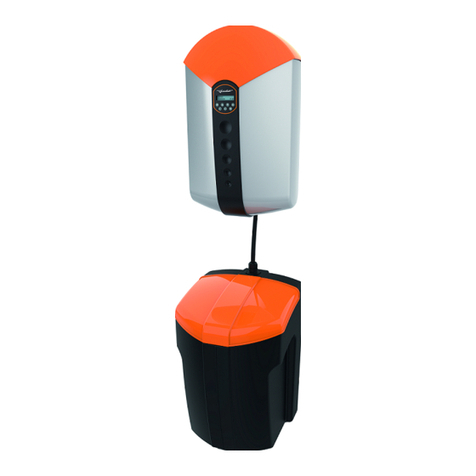
Judo
Judo i-soft Installation and operating instructions
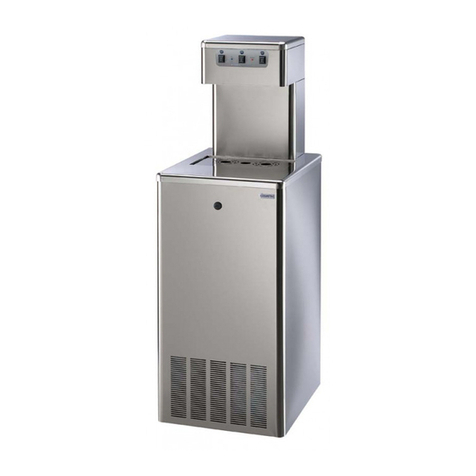
MERQUIP
MERQUIP NIAGARA Installation, use and maintenance handbook
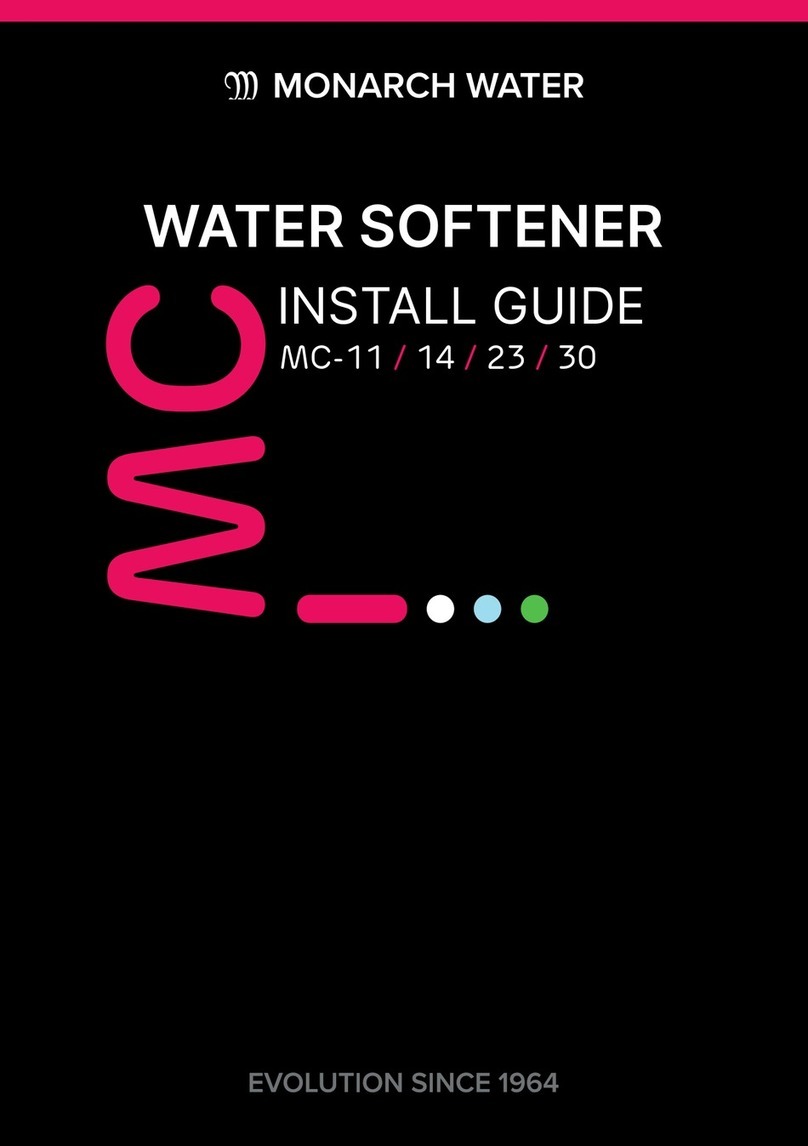
Monarch Water
Monarch Water MC-11 install guide
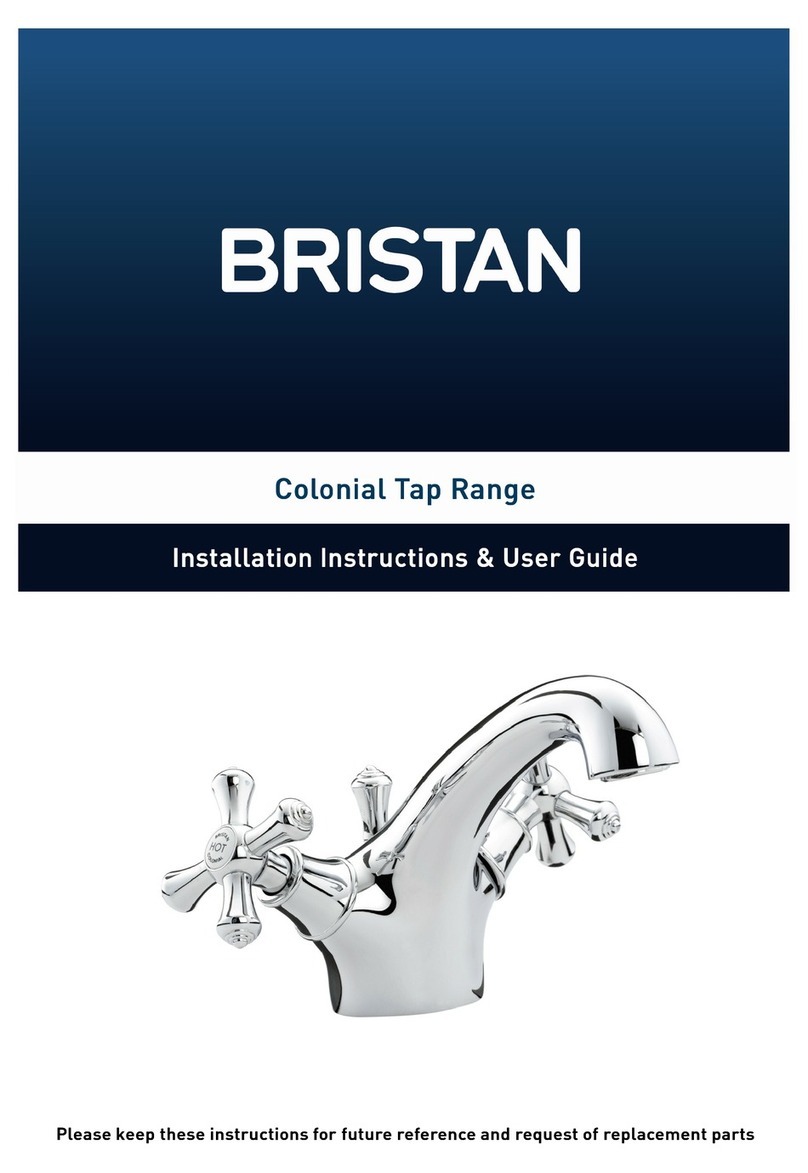
Bristan
Bristan Colonial Tap Series Installation instructions & user guide
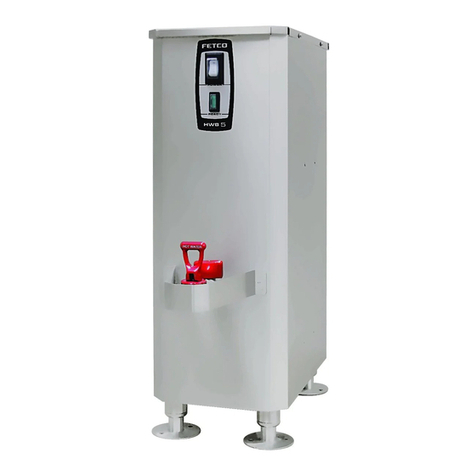
Fetco
Fetco HWB-5 Users guide and operator instructions

Lancaster Water Treatment
Lancaster Water Treatment 7-LECS-50 Installation, operating and service manual

Glacier bay
Glacier bay VWD1066BLS Use and care guide
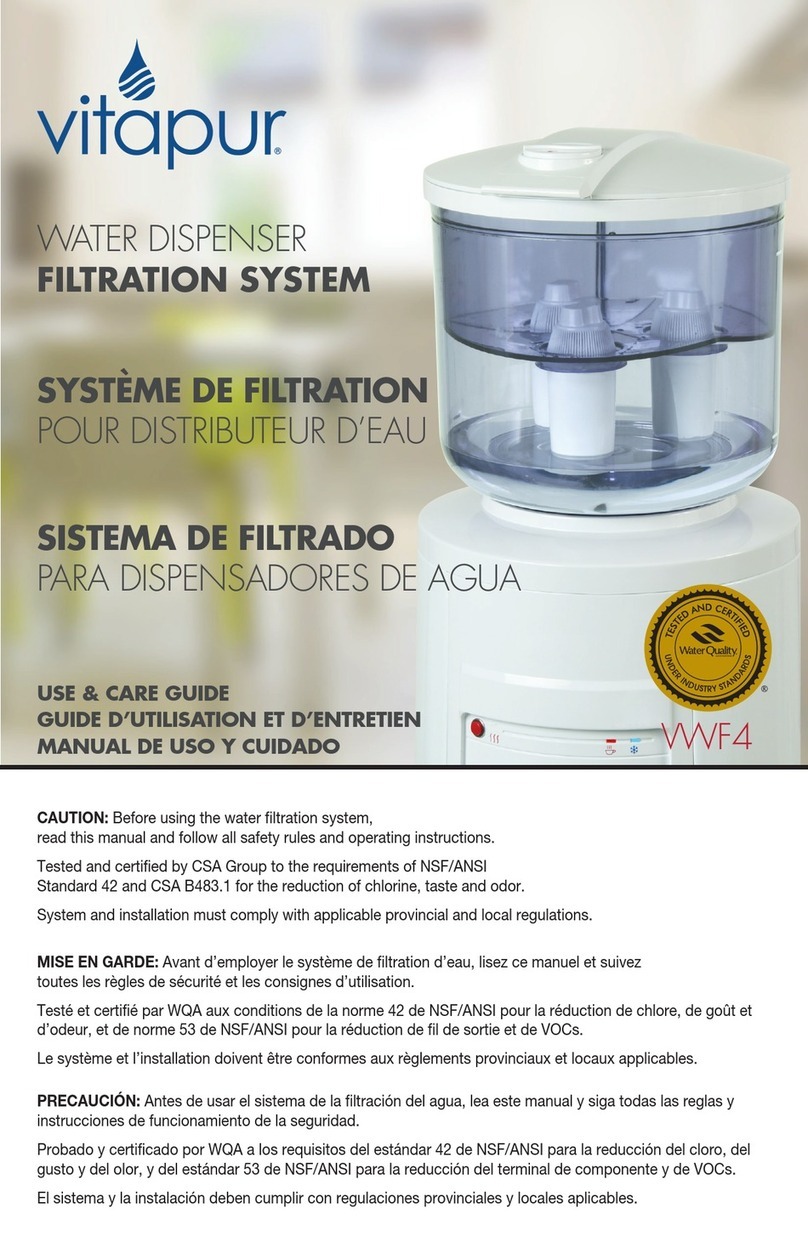
GHP Group
GHP Group Vitapur VWF4 Use & care guide

vitapur
vitapur VWD5206W Use & care guide
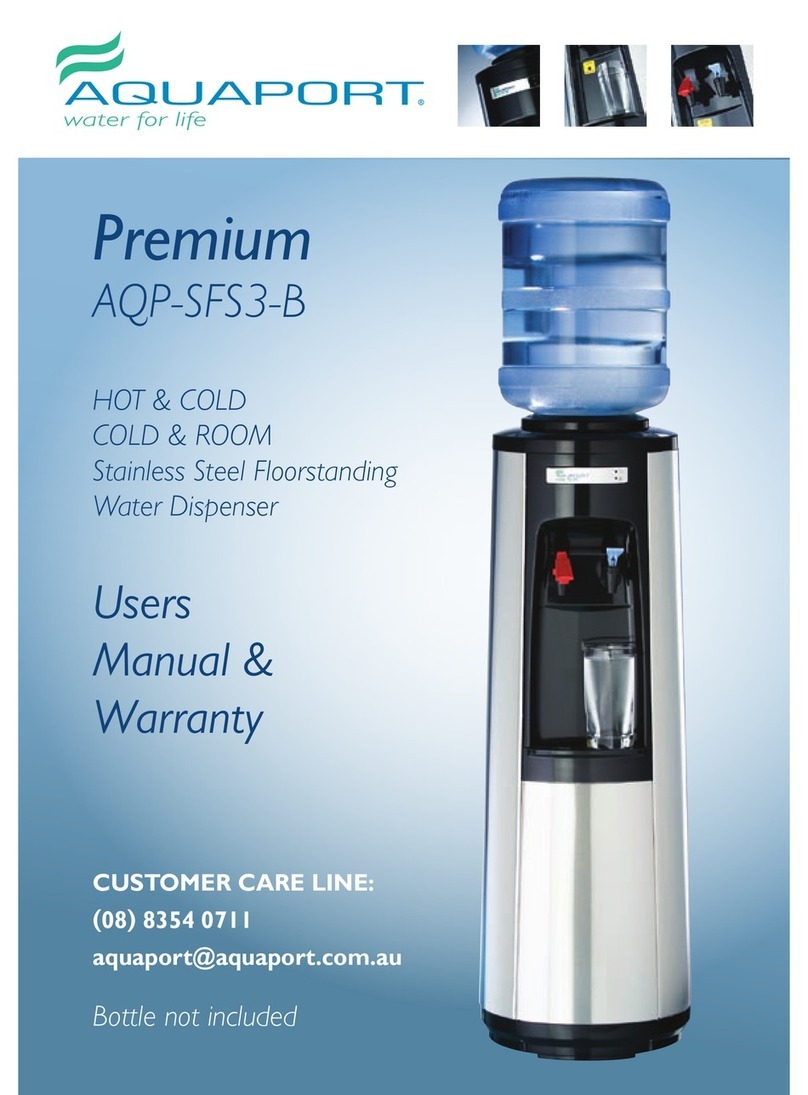
Premium
Premium AQP-SFS3-B user manual
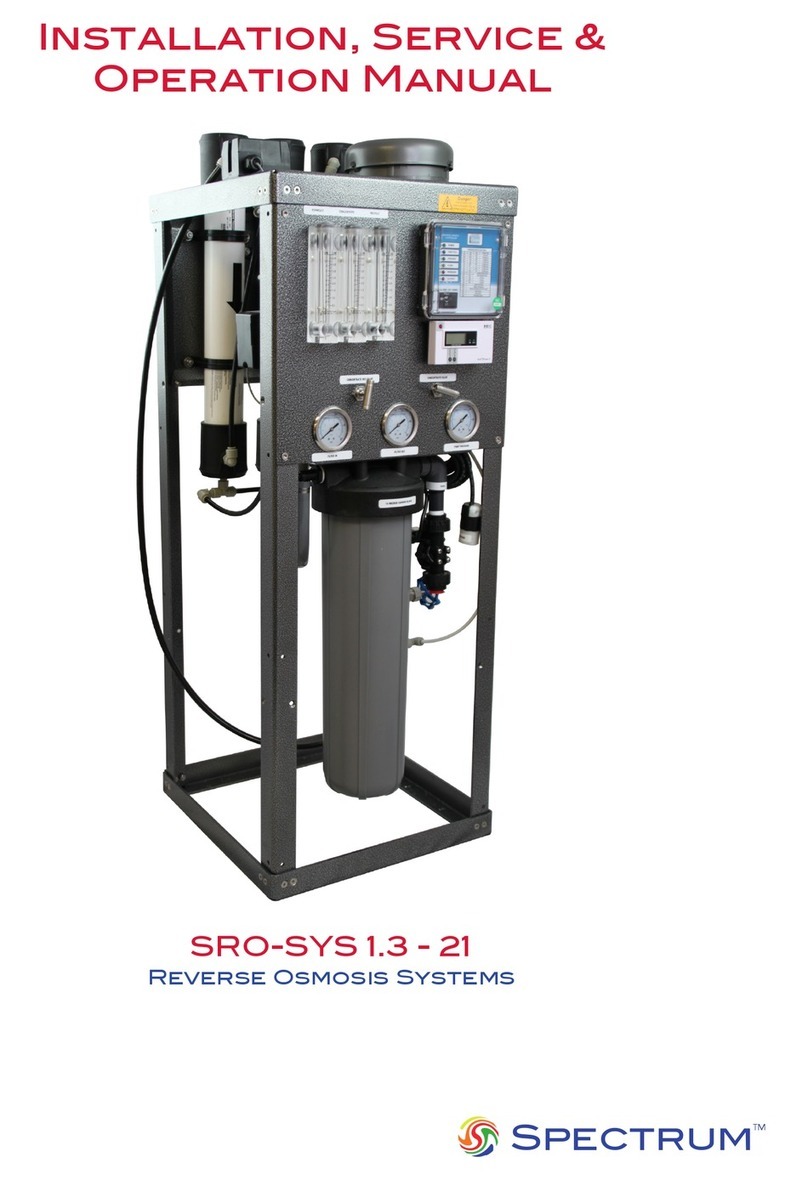
Spectrum
Spectrum SRO-SYS 1.3 Installation, service & operation manual
